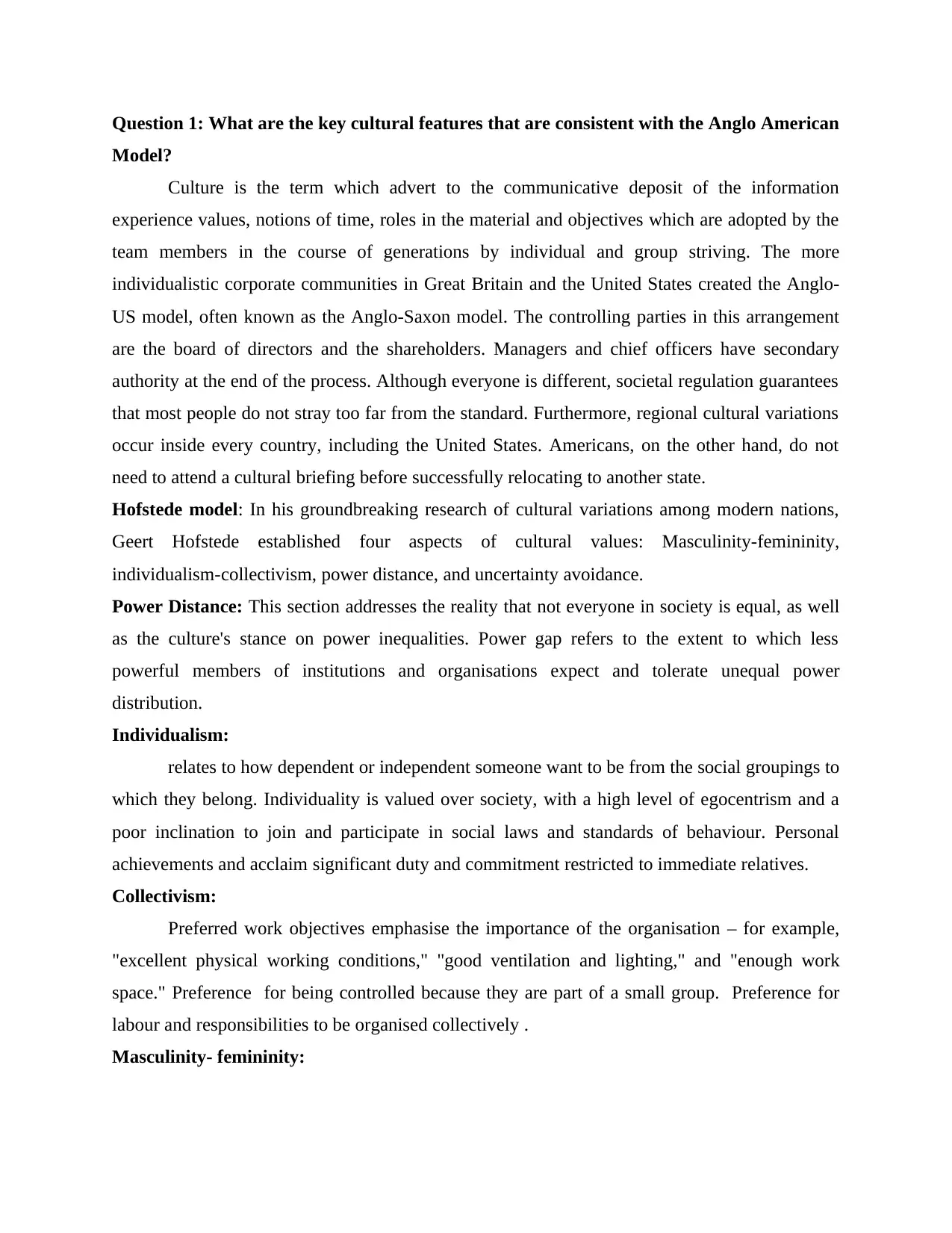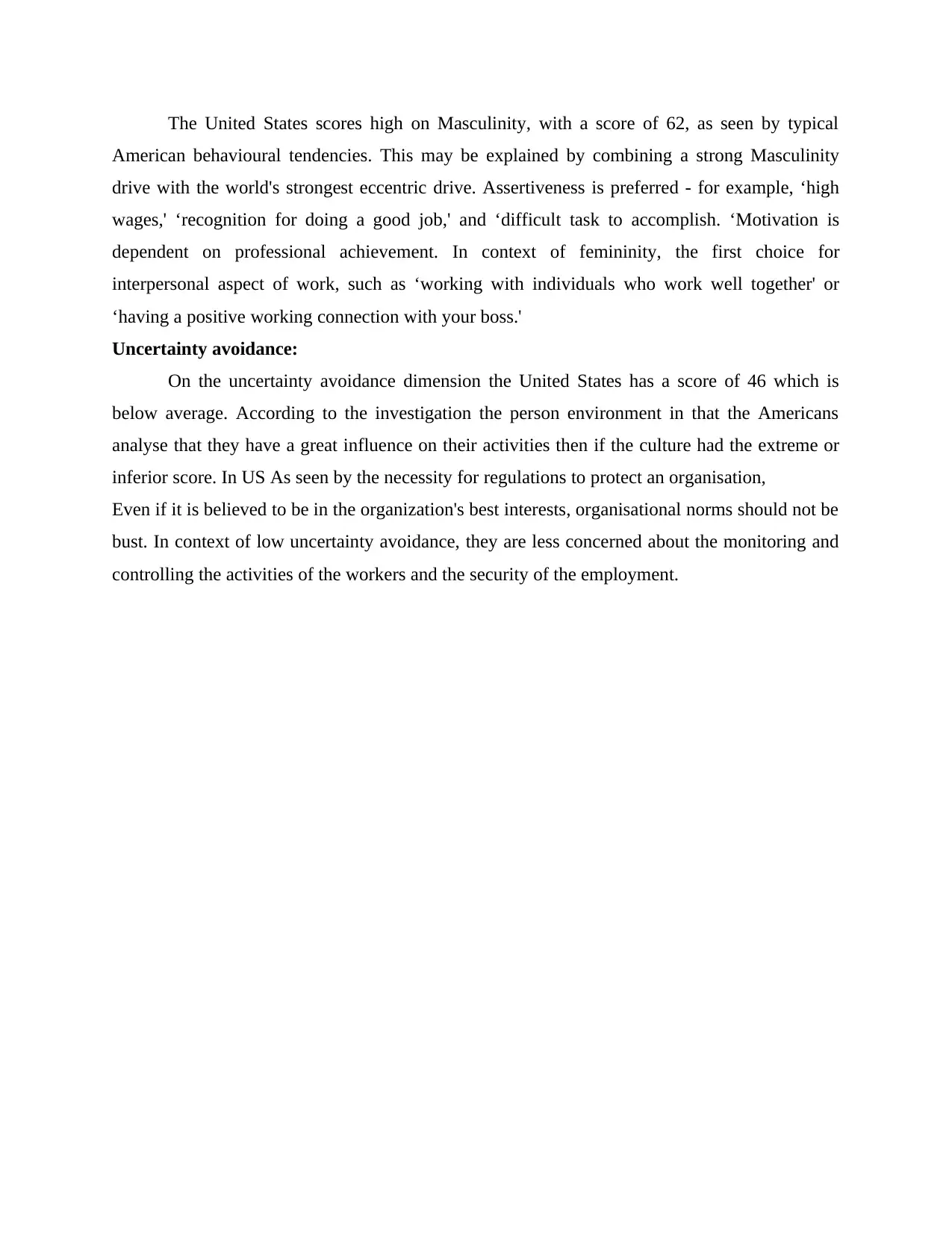International HRM: Key Cultural Features of the Anglo American Model
VerifiedAdded on 2023/06/18
|3
|612
|459
Essay
AI Summary
This essay delves into the key cultural features consistent with the Anglo-American Model, often associated with corporate communities in Great Britain and the United States. It references Hofstede's cultural dimensions, including power distance, individualism, masculinity-femininity, and uncertainty avoidance, to analyze American behavioral tendencies. The essay highlights the preference for individualism, assertiveness, and a below-average score in uncertainty avoidance within the US context. It further explains how Americans perceive their influence on activities and organizational norms, emphasizing a balance between the need for regulations and the freedom to challenge them for the organization's benefit. The essay also touches on the interpersonal aspects of work, such as collaboration and positive relationships, in contrast to professional achievement-driven motivation.
1 out of 3



